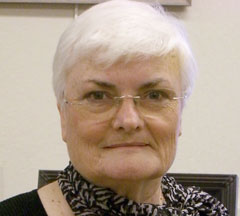What Are Biofilms?
By Dr. Harriet Burge, EMLab P&K's Director of Aerobiology
We have had several questions about biofilms this month, and there appears to be some
misconception of what they are, so here is a brief explanation, and a short discussion about
how they relate to indoor air quality.
The main misconception that I have heard from several different sources is that residual
deposits of food or soap or grease or any other protein/carbohydrate substance that accumulates
on a surface is a biofilm. In fact, while the bacteria that form biofilms may feed on these
substances, the biofilms themselves are communities that are formed by bacteria, and which may
subsequently be occupied by many different microorganisms including algae, protozoa, and some fungi.
The biofilms are formed when bacteria adhere to a solid surface and enclose themselves in a
sticky polysaccharide. Once this polysaccharide is formed the bacteria can no longer leave the
surface, and when new bacteria are produced they stay within the polysaccharide layer. This
layer, which is the biofilm, is highly protective for the organisms within it. In fact, it is
considered a fact that many bacteria could not survive in the environment outside of biofilms.
Biofilms are ubiquitous in the environment. They form on our teeth, inside our bodies, in our
streams and oceans, on natural surfaces continually wetted by dripping water. They also are
formed inside of all of our water pipes, toilets, and drains, and, in fact, everywhere where
there is persistent water.
In general, while a few fungi can form their own biofilms, and a few inhabit bacterial biofilms,
the so-called "molds" generally do not grow in or even on the surface of biofilms.
This is because there is generally too much water. The majority of fungi will not grow under
water, while biofilms are always under water at least most of the time.
Biofilms will not go away on their own, and considerable effort is required to eliminate them.
Biofilms on teeth, components of which contribute to plaque formation and tooth decay, are
removed by diligent scrubbing with somewhat abrasive materials. Unfortunately, the biofilms
return within hours, and teeth cleaning is an endless process.
Biofilms on other surfaces can be scrubbed away, or can be disrupted using very hot water
(steam is best) and concentrated oxidizing agents. However, they will return quickly unless
the water source is removed. Hence, there are always biofilms present where, by definition,
water is always present (e.g., in the ocean, rivers, our mouths, and our water pipes). It is
important to remember when people express concern about biofilms, that every drop of water that
we drink has been in constant contact with a biofilms.
Biofilms can become problematic under some circumstances. Sewer pipes may become so thickly
coated with biofilms that they have to either be cleaned or replaced. On the space station,
where drinking water is continuously recirculated, biofilms can build up to the point of
restricting flow. NASA has done a great deal of biofilms research in order to be able to
provide good drinking water to the astronauts.
Biofilms can also become colonized with organisms that may be dangerous to some people. In the
machining industry, biofilms in the pipes containing the water based coolants sometimes become
colonized with Mycobacterium species. While infections from this source (ie., tuberculosis)
is rare, the organisms do produce allergenic materials that can lead to hypersensitivity
pneumonitis. These organism populations are extremely difficult to remove. Most of the
"cures" are likely to damage the systems themselves. Shocking with chlorine, and
steam cleaning have been tried successfully, and a one time treatment such as this is apparently
not too damaging. However, unless one discovers the initial source of Mycobacterium
inoculum, reinfection is likely.
Another pathogen that colonizes biofilms is Legionella pneumophila. Most isolated cases
of Legionnaires' disease result from exposure in homes, often from showering in water that
passes across Legionella-colonized biofilms. In this case, the best control is to keep
hot water temperatures high (contrary to energy saving recommendations).
To avoid the risk of scalding, mixing of hot and cold water should be done directly at the tap.
Most people do not need to be concerned about Legionnaires' disease. However, people with
immune system impairment (and this includes heavy smokers) should be aware of this risk.
Further reading on biofilms is available at:
http://www.biofilm.montana.edu.
This article originally appeared in the April 2010 issue of Indoor Environment Connections.
Reprinted by permission.
 |
|
About Dr. Harriet Burge
Dr. Harriet Burge is EMlab P&K's Director of Aerobiology and Chair of EMLab P&K's
Scientific Advisory Board. Widely considered the leading expert in indoor air quality (IAQ),
Dr. Burge pioneered the field more than 30 years ago. She has served as a member of three
National Academy of Sciences committees for IAQ, including as Vice-Chair of the Committee
on the Health Effects of Indoor Allergens. View Dr. Burge's Curriculum Vitae.
Read "Ask Dr. Burge" articles
|